

The Board is made up of an 11 x 11 grid of hexagonal cells. Each hexagon is referred to as a cell. Rows are delineated by the numbers 1-11, columns by the letters A-K. Pieces are indicated on the board by letters(this is a place holder). Which player pieces belong to are indicated by white letters for player 1, black for player 2.
Players have their choice of five cards and one spell card, and a queen card. Cards indicate a type of piece and provide information on it. Pieces are unique in the way they can move and their no summoning zone(explained in next section). Spell cards describe an effect players can induce during the game. Summoning a piece to the board(putting it on the board) requires mp. Players start the game with 200 mp.
Zones are cells on the board with rules on how pieces can interact with them. A piece’s Movement Zone is where it can move(explained in depth in a later section). A piece’s
No Summoning Zone is where your opponent cannot summon a piece in any way. There are no spell cards that circumvent no summoning zones. A piece’s Starting Cell is the cell it occupies at the start of a turn. The Beginning Zone is where players can summon pieces on their first turn.
On both players first turn, they can summon up to 16 pieces in their Beginning Zone only, one of which must be a Queen(one Queen will have no cost during this turn). A player’s Beginning zone is the first three rows closest to them(1-3 for player 1, 9-11 for player 2). Player 1 goes first. During their subsequent turns, a player can either summon a piece anywhere on the board(except their opponent’s No Summoning Zones), move a piece, sacrifice their pieces or use their spell card.
Pieces are captured(taken off the board by an opponent) if an opponent piece moves into the cell it occupies. A player wins if their opponent has no queens on the board. The game is a draw if Queens are the only type of piece which can move on the board.
Players can sacrifice their pieces when performing a ritual summon. Ritual summons are a special type of summon that occur in two of a player’s successive turns, one to sacrifice pieces(remove from the board) and another to summon a piece. Any type of piece can be ritually summoned and requires two sacrifices. The sacrifices must be within 2 cells of each other and the piece that is ritually summoned can only be summoned the 2 cells its sacrifices occupied. Pieces with a ritual requirement, can only be ritual summoned and one of the sacrifices must be the requirement. A ritual summon does not need to be completed.
Movement is similar to chess in that pieces can either “leap” to cells or they have a path of cells. A path is a straight line of cells connecting from a piece’s starting cell. A piece can have up to 6 paths(for each side of its starting cell). If another piece is within a path, you cannot move that piece past the obstruction. Movement cells that are not part of any of a piece’s paths, can be leapt to(placed on) as long as another one of your pieces is not already occupying it(see other rules). In the following examples, green colored cells indicate where that piece can be moved to. The purple cell indicates the starting cell. Letters indicate pieces(see Notation). Take note of which piece belongs to which player(see The Board).
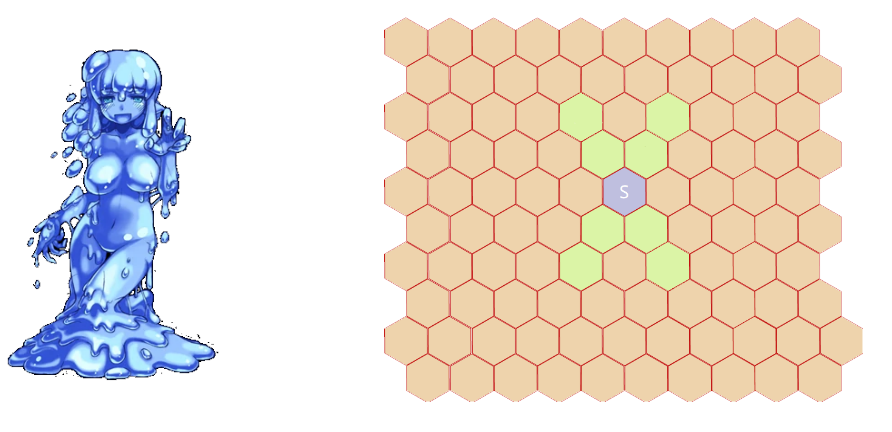
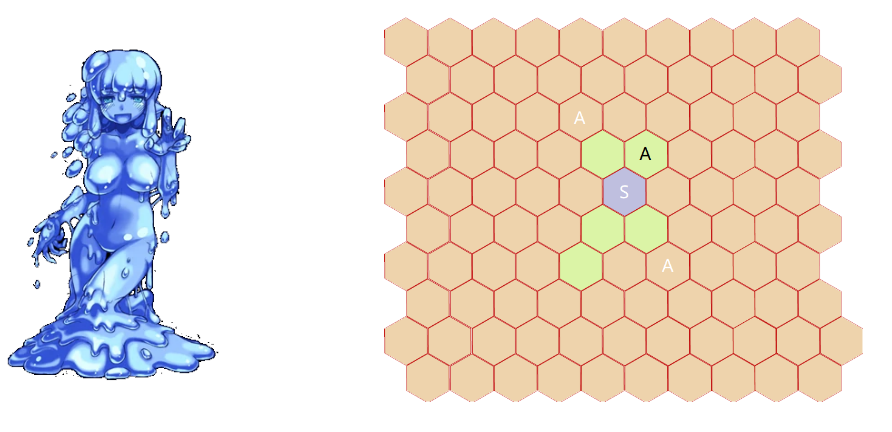
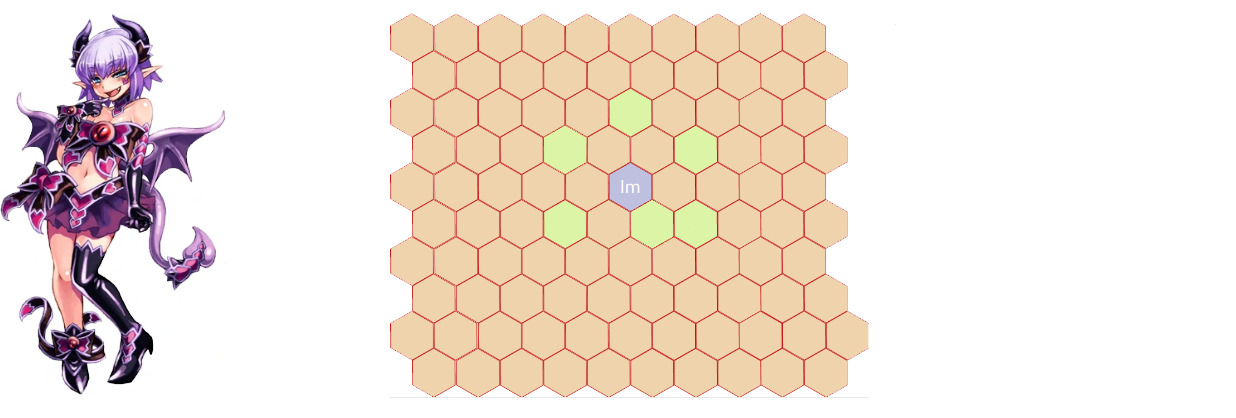
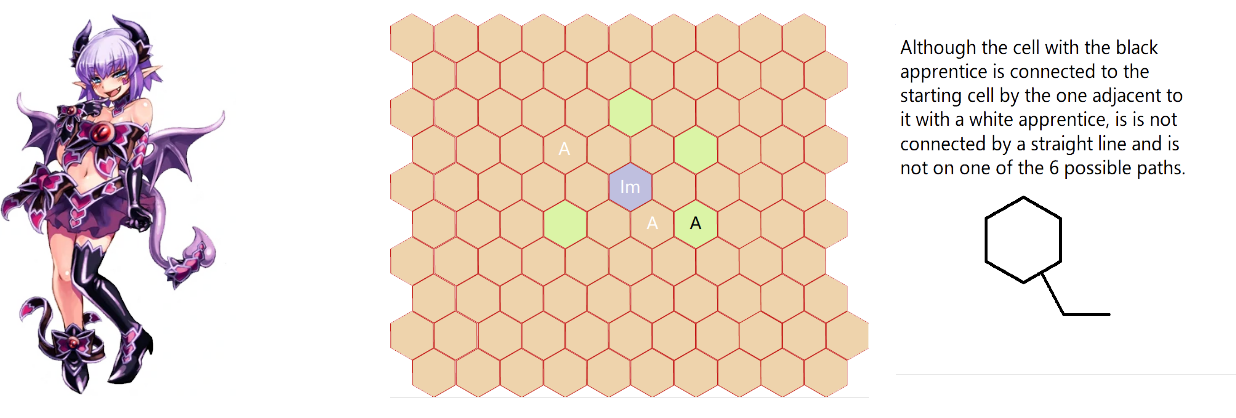
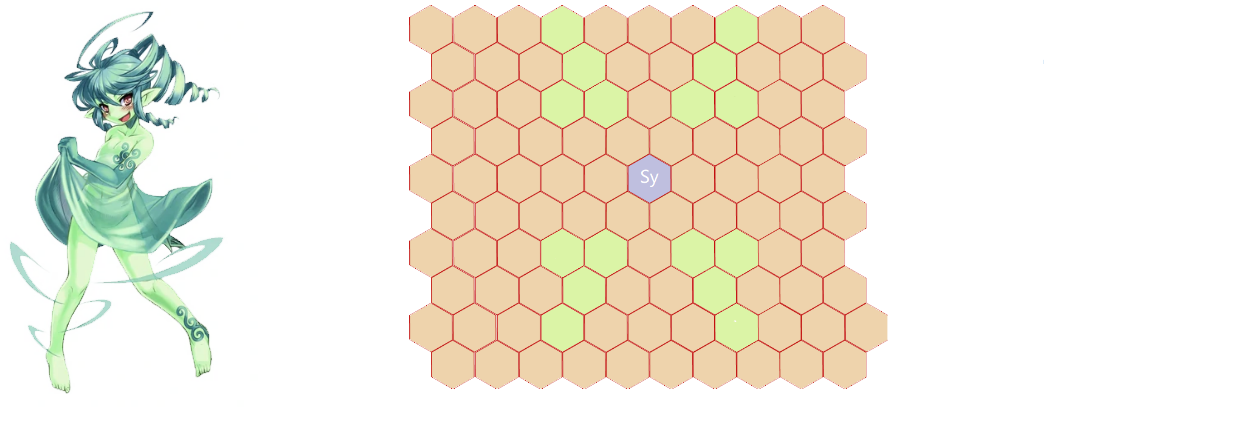
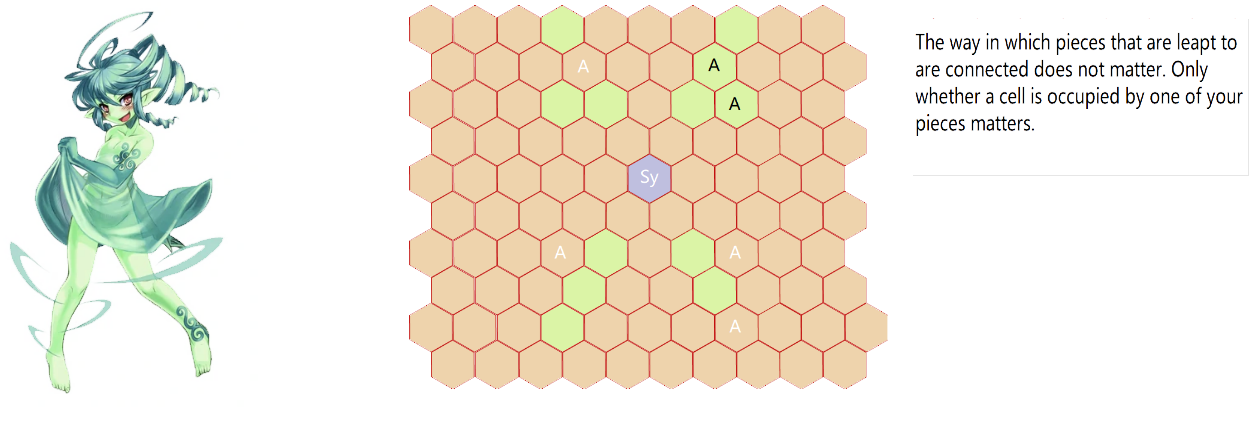
1. A player can have up to 10 of one type of piece on the board at once.
2. A player can summon a queen twice during a game, including the free one on the first turn.
3. Players can use their spell card once per game.
4. Pieces cannot be summoned in an occupied cell.
5. A player cannot capture their own pieces.
6. Players can only sacrifice exactly 2 pieces during their turn.
7. Both player’s cards must be visible to each other during the game.
8. False Angel has a minimum cost of 1 mp and no maximum.
9. Spell card effects are prioritized over all rules.
(All Art and visuals are place holder) Two colors on one cell indicates an overlap of zones.



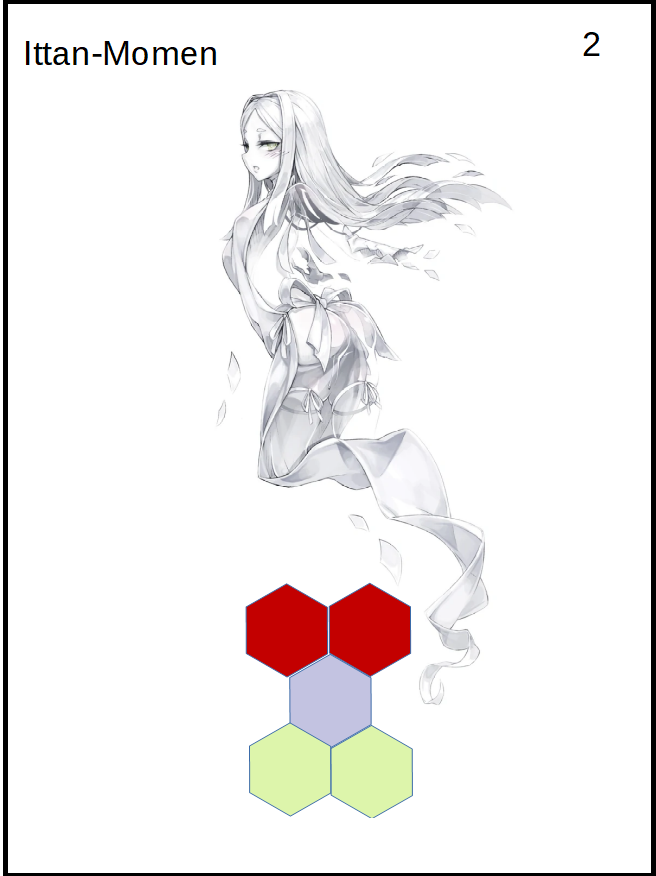

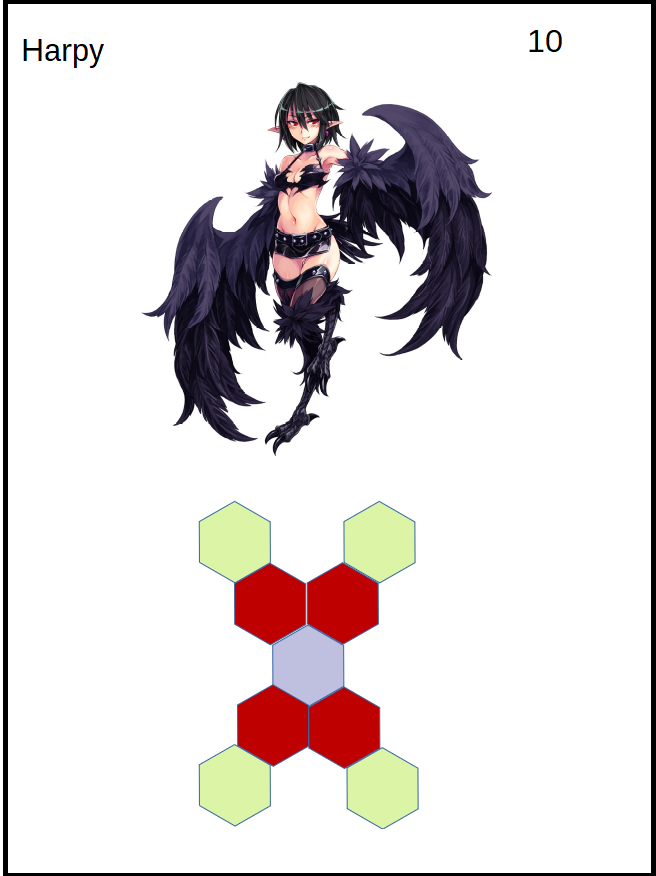
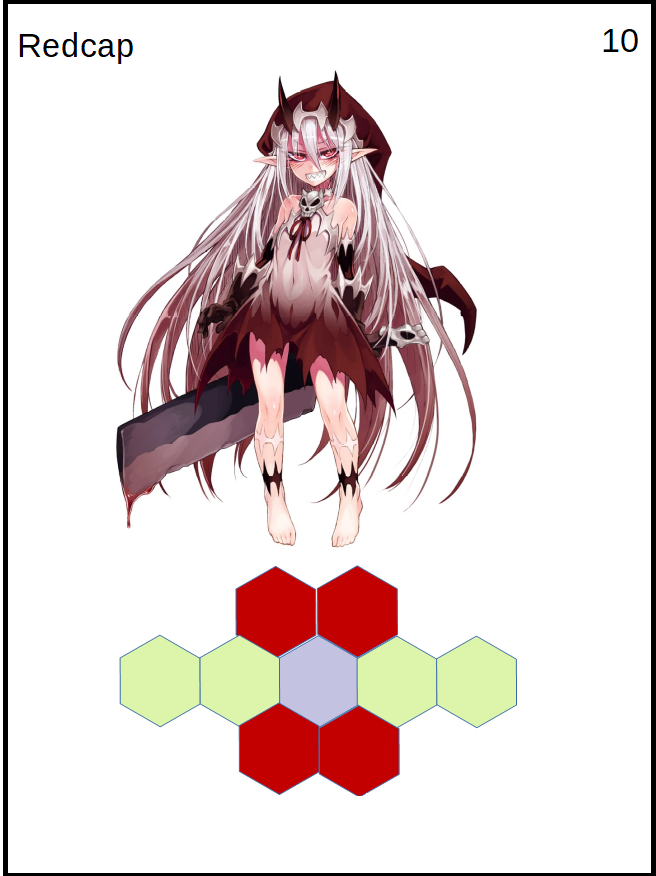
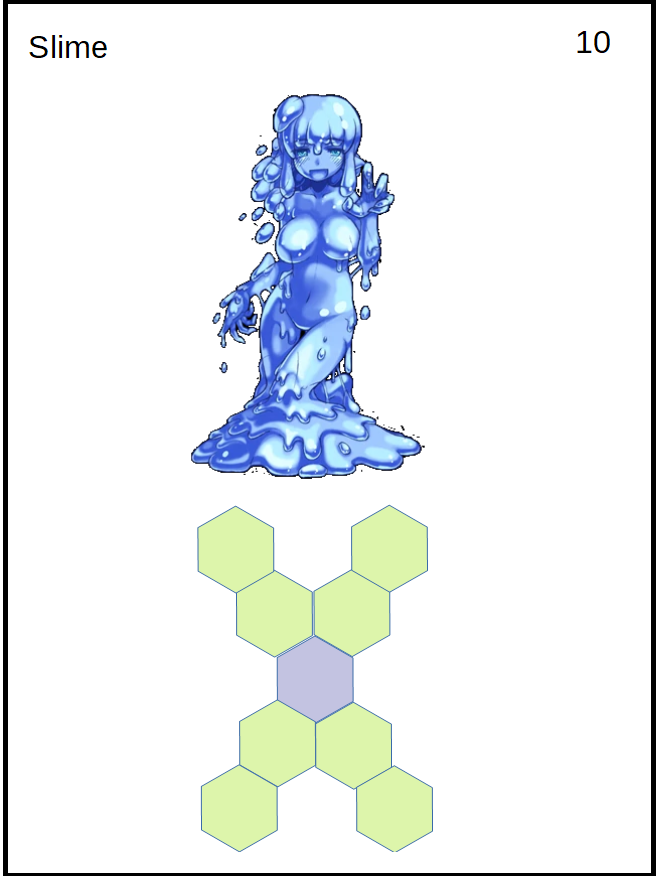




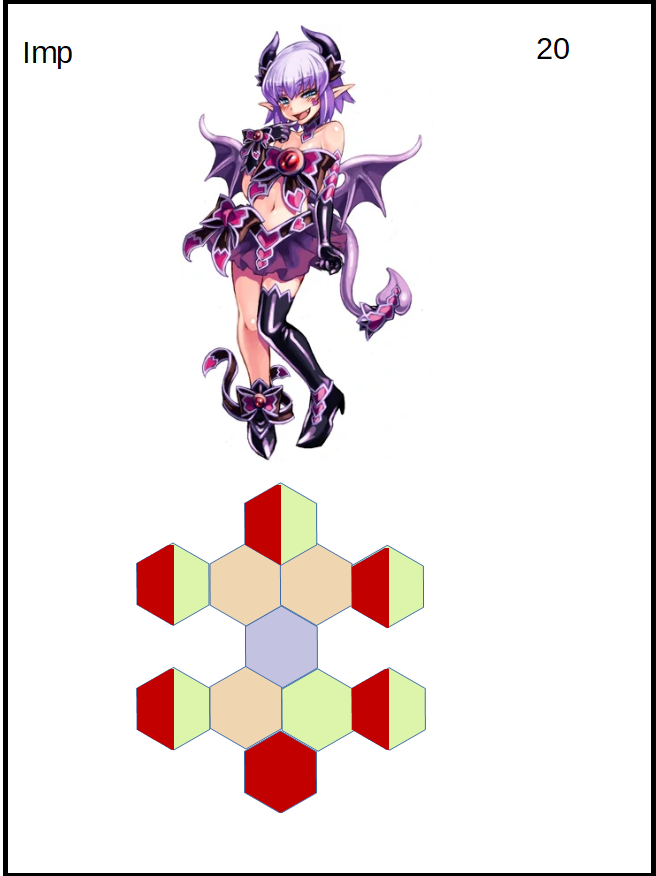

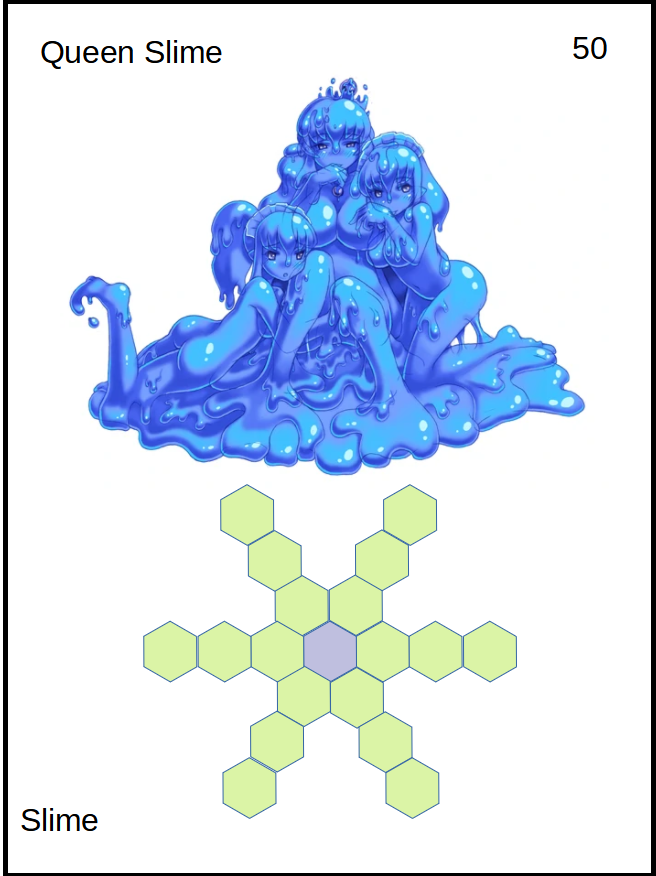
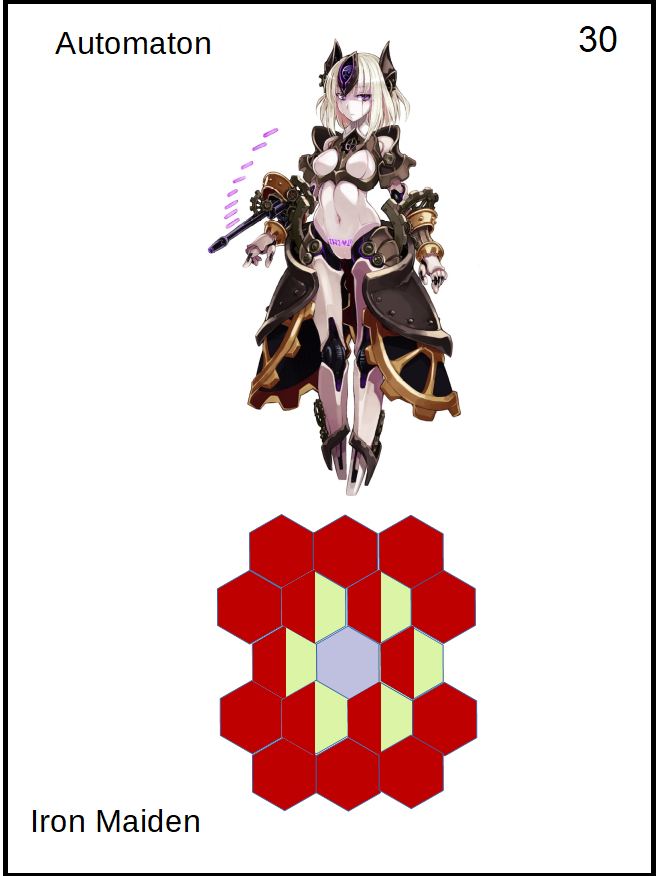
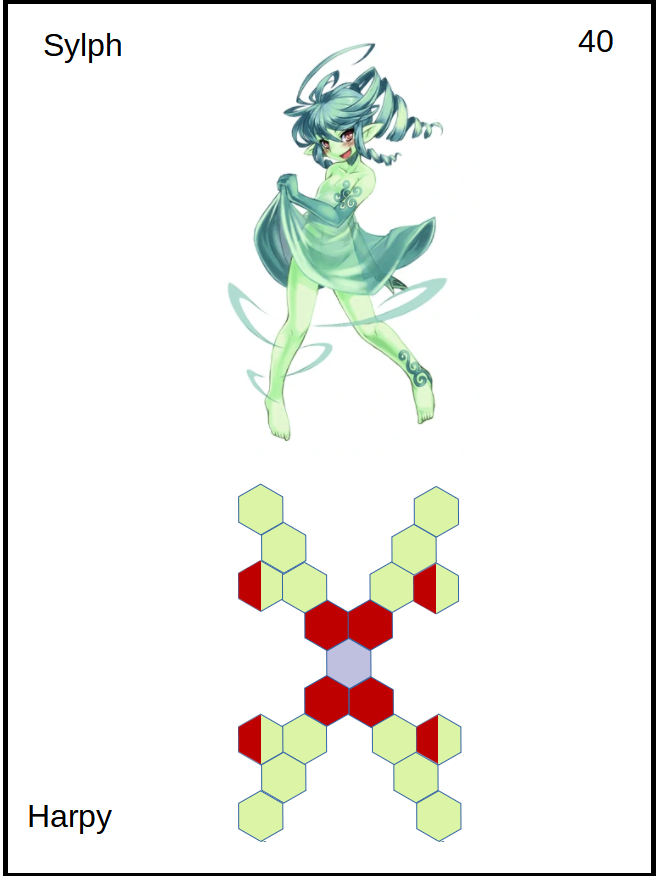

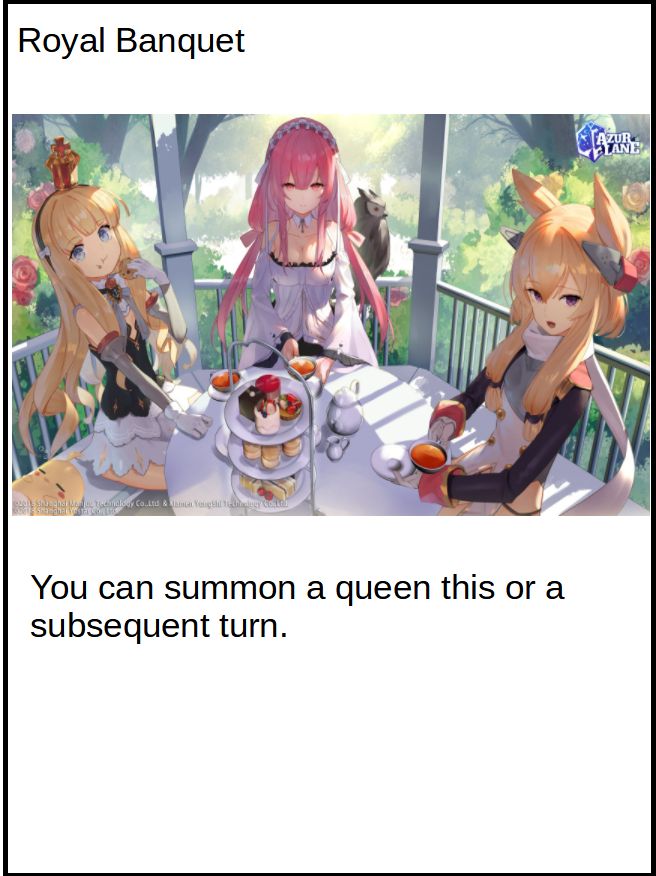
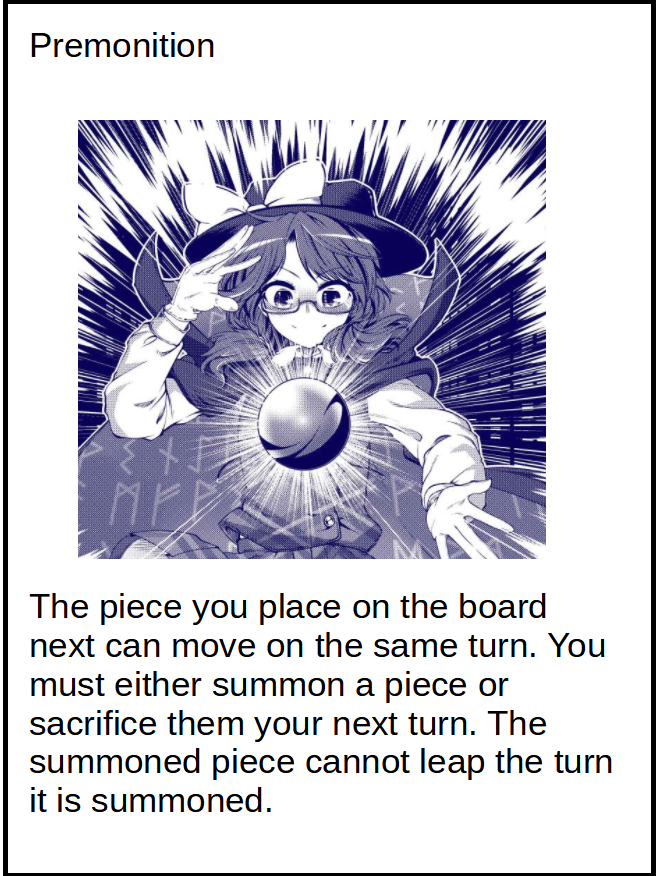
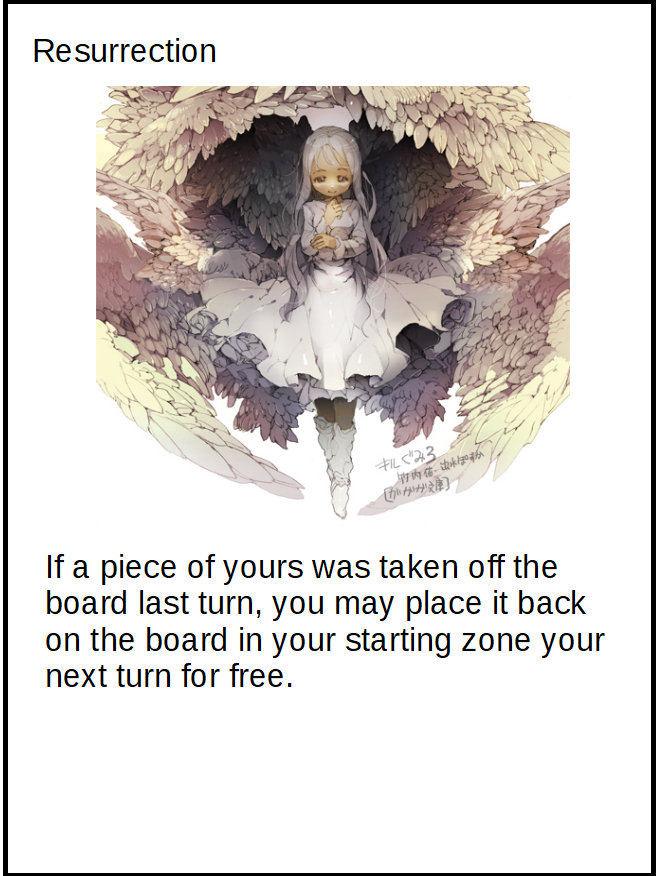
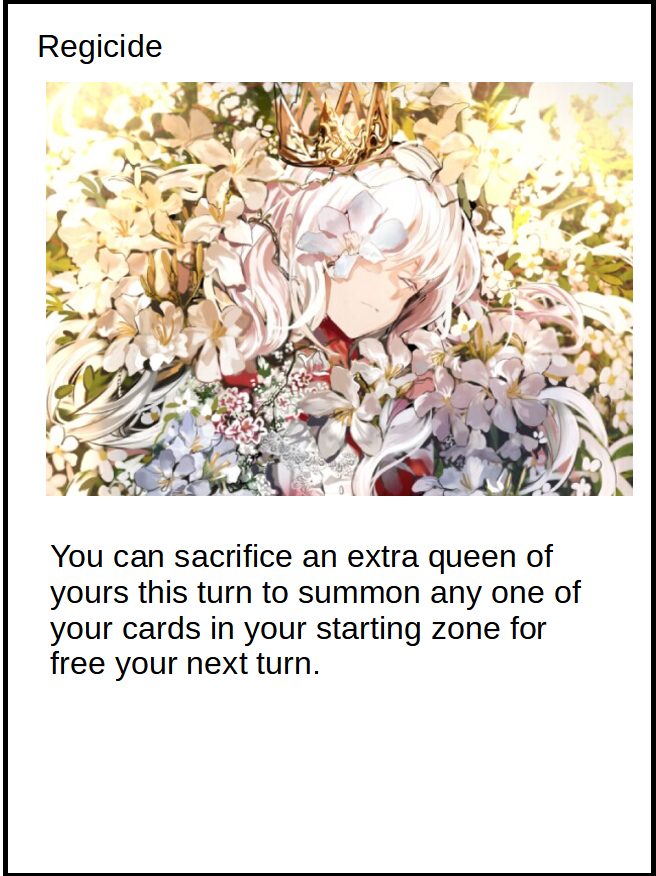

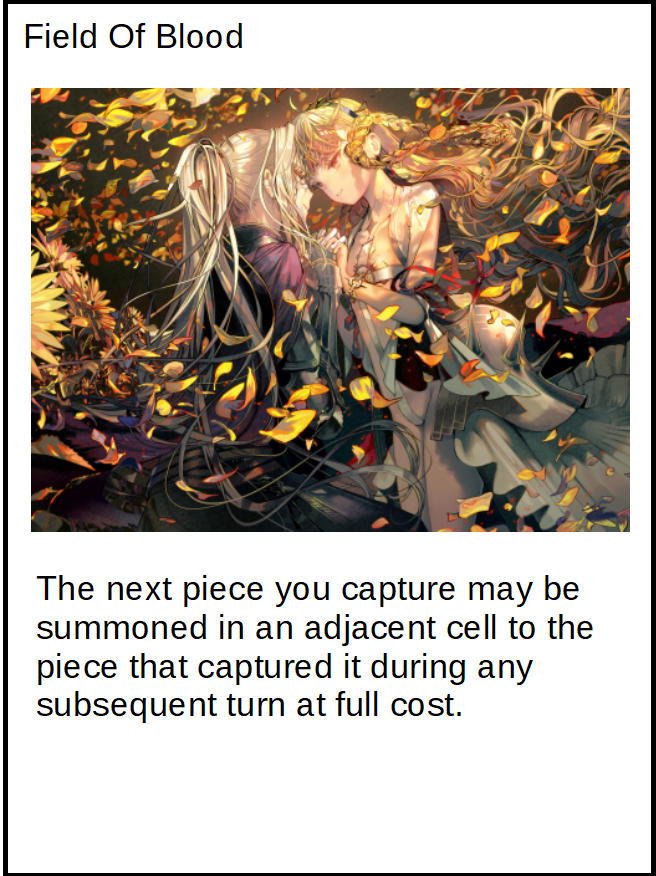
A cell on the board is denoted by a letter and number coordinate. a1 is located on the left corner of the board. Turns are numbered. Pieces are denoted by letters. When multiple actions occur on the same time, those actions are written in the order of occurrence and separated by a comma and space. The remaining mp of a player at the end of their turn is written last following a vertical bar.
A – Apprentice SRB – Royal Banquet I – Iron Maiden SP - Premonition N – Nekomata SR – Resurrection It – Ittan-Momen SSS – Soul Swap H – Harpy SRE - Regicide S – Slime SFB – Field of Blood Rc – Redcap Hs - Holstaur Ro – Red Oni coordinate-coordinate – moving a piece B – Blue Oni *coordinate - summoning a piece P – Priestess coordinate~coordinate – capturing a piece Im – Imp spellcard – using a spell card F – False Angel coordinate’coordinate - sacrificing pieces Qs – Queen Slime card1 : card2 – User’s card 1 swaps with opponent’s card 2 Au – Automaton Sy – Sylph Q – Queen
3. A b1-b2 |150 The apprentice on b1 moves to b2 4. A*c3 |148 An apprentice is summoned to c3 5. A b2~c3 |150 The apprentice on b2 captures the piece on c3 6. A'a3 A'b3 |148 The apprentices on a3 and b3 are sacrificed 7. SSB, Q*f5 |100 Royal Banquet is used, a queen is summoned to f5 8. SSS, H : S |148 Soul Swap is used, user’s harpy card is swapped with the opponent’s slime card
